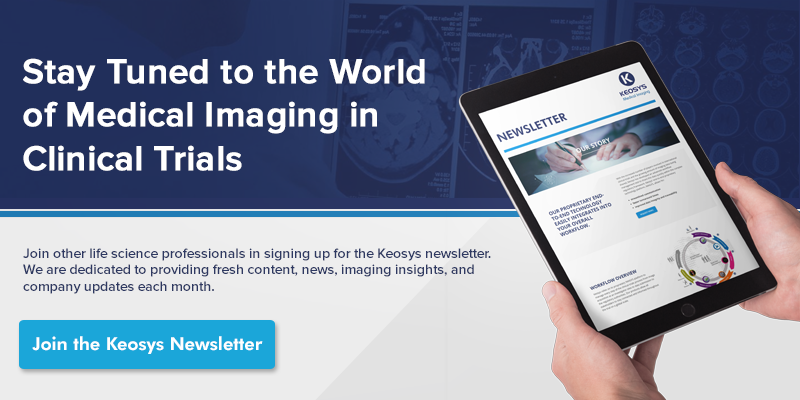If you have a friend that lives out of town and has an upcoming birthday, you might order a gift online. With the purchase, you can include a personalized message, the store will gift-wrap it and then ship the gift. This is an example of an integrated service (sometimes called an end-to-end service): the concept of bringing applications/software, infrastructure and business processes together to provide a combined business operation to be delivered 'as a service'.
The concept of 'as a service' arose in the software industry, but nowadays many other products, including medical imaging, can be delivered as an end-to-end system.
What is an Integrated Medical Imaging System?
Our IMAGYS platform is an example of an end-to-end medical imaging system. Clinical study sites upload patient images, which then remain in the same online platform throughout the quality control (QC), the online reading session and all query and data management steps involved.
This contrasts with using two or three separate, non-integrated, systems sometimes used by imaging core labs (a centralized lab that undertakes QC and assessment of images). For example, they may use one software package that interfaces with the study site to upload images to a central location, then a second software package to manage queries with clinical sites, and a third tool to handle the reading of the images themselves. As might be expected, the use of multiple systems can be prone to error and is far less efficient than an integrated system.
The Benefits of an End-to-End Service Model
End-to-end systems offer several key advantages, including:
- Reactivity: Relying on advanced analytics, integrated systems allow Project Managers to react quickly and reduce the time it takes to act on insights
- Mobility: They are accessible across multiple devices at any time and data is available and up-to-date 24/7 particularly necessary for real time safety monitoring, central confirmation of eligibility and/or cohort stratification
- Flexibility: End-to-end platforms allow settings and functionalities to be easily changed to meet customer needs more precisely, and they can be integrated with existing systems such as EDC (electronic data capture) software
- Efficiency: Improved workflows are achieved with end-to-end systems, through streamlined communication, faster turnaround times and improved data integrity and traceability
Why Use an Integrated Imaging System for Your Clinical Study?
Reactivity is a main advantage of an integrated system. If issues arise during a clinical trial, for example with image Quality Control, an integrated system such as IMAGYS puts Project Managers and Study Coordinators — who are the main contact points for quality controllers, readers and investigators — at the heart of the system. They can monitor images anywhere along the system making sure that queries are solved rapidly and retraining of investigator sites is triggered when necessary.
Study coordination and data management tasks are made more efficient by using an end-to-end system: because all processes are on one system study coordinators can easily follow pending uploads, quality controls and readings and be more proactive in their approach.
Moreover, IMAGYS has an audit trail feature covering the lifecycle of each image (date of acquisition, upload, QC and read) and the possibility to export this information in real time, providing users with real-time project status and the authorities with the visibility they expect. Importantly, an end-to-end system imparts strong data security: IMAGYS uses a closed image circuit so there is no risk that any information will leak outside the system.
Boosting the Efficiency of Clinical Trials
To summarize, integrated medical imaging systems boost the efficiency of clinical trials. They are reactive to any issues that might arise, they make coordination and data management easier and allow for real time updates on project status. Added to this, they improve data integrity and store information securely.




